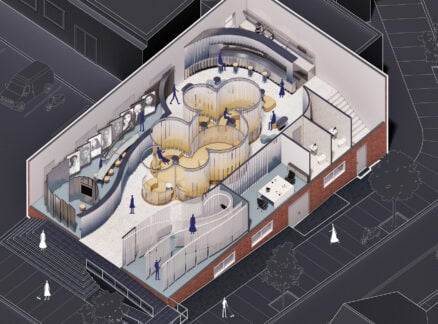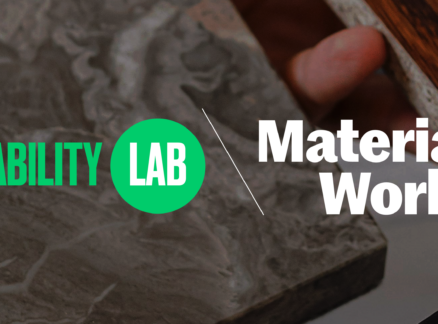March 1, 2004
The Cleverest Building Material Around
“It will be the ultimate example of free expression and free speech,” says James Timberlake, referring to SmartWrap, a new ultra-thin, polymer-based material currently in development that, if all goes as planned, could literally change the face of the building industry. Developed by Timberlake and Stephen Kieran, principals of Philadelphia architecture firm KieranTimberlake Associates LLP, […]
“It will be the ultimate example of free expression and free speech,” says James Timberlake, referring to SmartWrap, a new ultra-thin, polymer-based material currently in development that, if all goes as planned, could literally change the face of the building industry. Developed by Timberlake and Stephen Kieran, principals of Philadelphia architecture firm KieranTimberlake Associates LLP, the compound comprises substrate and printed and laminated layers that have been roll-coated into a single film. This ensuing film has the capacity to change color and appearance, as well as to provide shelter, control interior climates, and offer light and electricity.
Since the “smart” technology embedded in SmartWrap allows the material to integrate and physically compress a wall’s segregated functions, the material allows builders to save space and time; after all, it’s far quicker (and cheaper) to put up a single sheet of film than it is to construct a brick-and-mortar counterpart. Because the Wrap also incorporates a number of emerging heating, lighting, information display, and energy collection and storage technologies, it also removes the need to add these separate, bulky systems. All of these functions are computer-controlled and can be adjusted on- or off-site.
Furthermore, because of SmartWrap’s chameleon-like appearance, structures built with it do not require conventional windows to let light in or allow views out. Instead, by altering the spacing of the patterns printed on SmartWrap’s surface, one can not only create windows, remove them, and alter their locations, but also change which visuals and patterns one wishes to see. These applications could be useful for private, commercial, retail, and business concerns, according to Timberlake. “Think about what you could do with a wall in a conference room, for example,” he says. “The wall could be used as a heads-up display for attendees.”
Although it is made of plastic, SmartWrap also challenges the commonly accepted thinking on sustainability, as it can be recycled ad infinitum. As Timberlake notes, many of the “green, sustainable materials we have right now go back into the waste stream. For example, brick can’t be made into more brick; it has to be crushed and made into roadway. SmartWrap can simply be made into more SmartWrap.”
SmartWrap grew out of a seminar Timberlake and Kieran taught at the University of Pennsylvania. The project received the first Benjamin Latrobe Fellowship, which was established by the American Institute of Architects (AIA) to increase awareness of new technologies and materials among professionals.
Timberlake expects the material to be commercially available in just three to five years. Currently, no permanent SmartWrap structure exists, although the Cooper-Hewitt National Design Museum in New York has a temporary installation built with the material displayed though Oct. 10.
In the past, innovative materials have failed to replace—or even co-exist with—such common building staples as brick and glass. Timberlake acknowledges this, but believes organic smart materials are the future of the industry. “The only issue [left] that needs to be addressed is scale,” he says of SmartWrap. Within a few years, he adds, “We imagine that you will be able to go to Home Depot and design your façade on a computer terminal and in a week’s time, a Wrap will arrive at your house, ready to be applied.”





